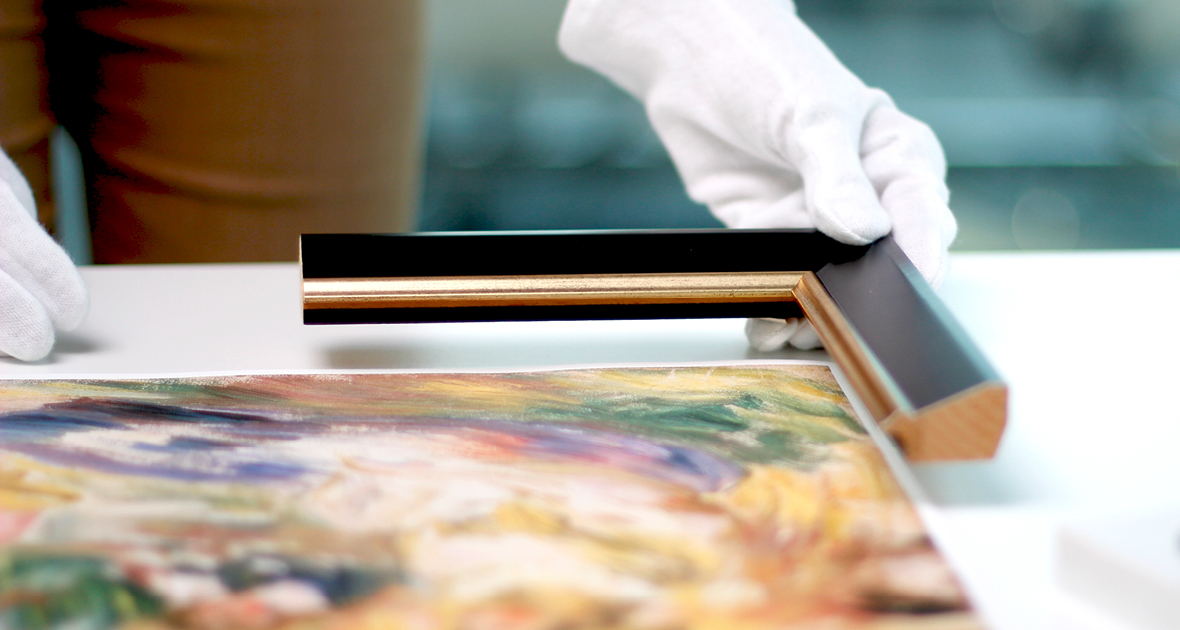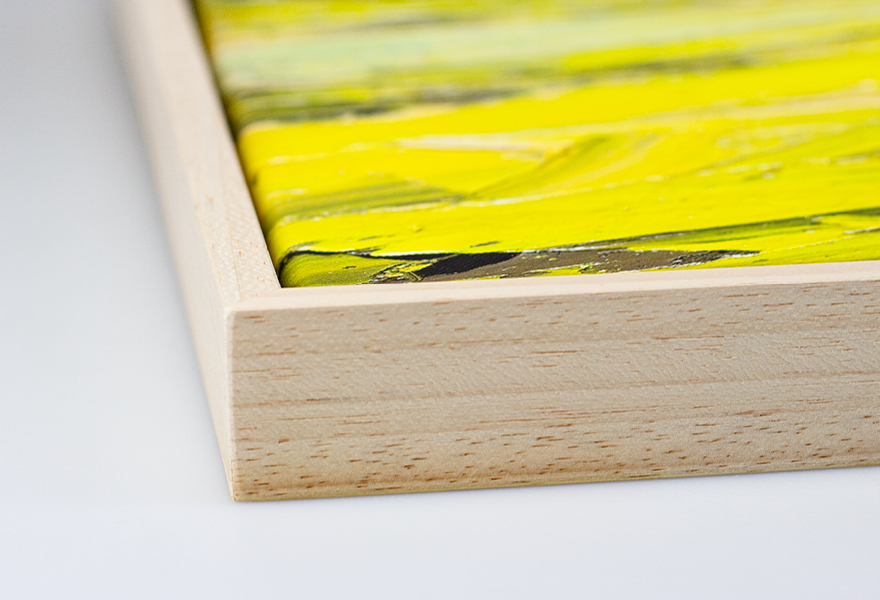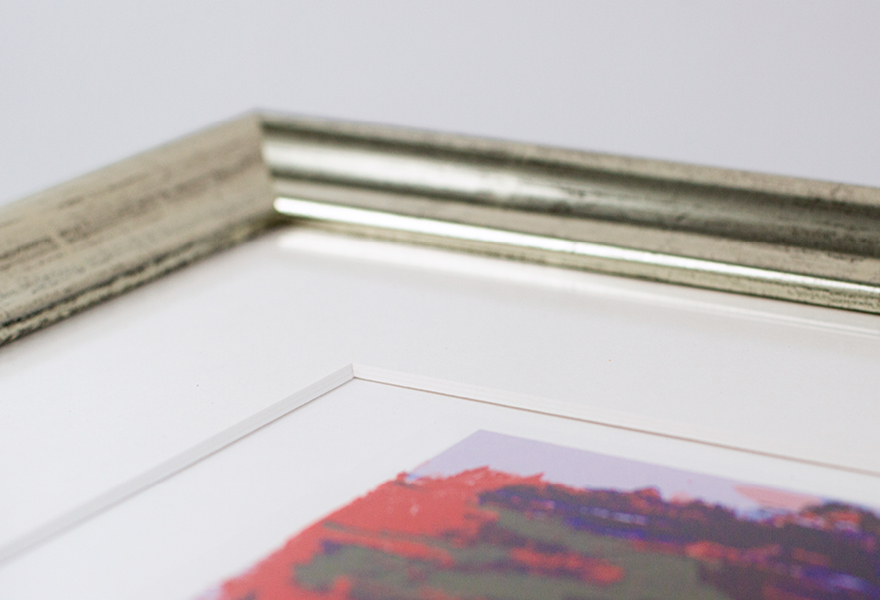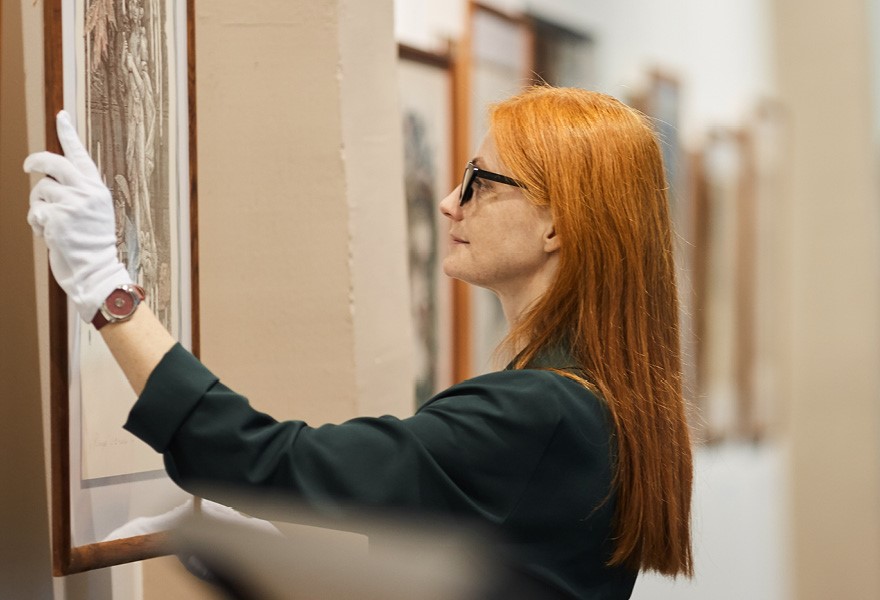
Small Details, Big Impact: How Frames and Passe-Partouts Optimise Works of Art
Optimise a work of art? This sounds strange, but when you frame certain works of art you will quickly understand why. What is the effect? Often the picture appears more striking. We answer the most important questions at a glance: for example, which frame suits the best, when a passe-partout makes sense and in which cases it is better to not use a frame at all.
At artSOLITAIRE, art lovers have the opportunity to buy original artwork directly from the artist. But that's not all: We promise an all-round service - right up to the perfect frame.
As soon as we receive confirmation from the artist that the desired original artwork is available in the studio, we will be happy to offer you a framing. In our digital catalogue, you can choose from solid wood strips in different colours, including frames with or without passe-partout. After your selection, you will receive an individual offer. And this is how your artwork arrives already ready framed.
Of course, we will be happy to help you with your choice. Nevertheless, here are some answers to the most important questions about frames and the mounting:

Which frames match which artwork?
A painting made with oil or acrylic paints on canvas is usually already stretched on a stretcher frame. So-called shadow gap frames without glass are suitable for perfectly presenting the respective motif with its relief-like appearance. What makes them so unique is that a visible gap between the stretcher frame and the outer frame draws the viewer's focus to the motif.
Classic frames with glass inserts can be used for works on paper or handmade paper, for example, for watercolours or drawings with chalk or ink. Regardless of the visual presentation, glass has a significant advantage: it protects the work from UV rays, dust, and physical touch.
The choice of the correct width, shape and colour of the frame should be well thought out, as an ideal frame additionally supports the effect of the picture and the luminosity of the colours. When choosing the frame colour, please ignore your interior design style and concentrate on the picture itself. A dark frame enhances the luminosity of the colours. It thus separates the picture from its surroundings so that it makes a statement in its own right.
While simple frames allow the work to unfold, opulent frames expand the motif and become part of the overall work of art.

Why and when is a passe-partout useful?
A passe-partout minimally increases the distance between the glass and the surface of the picture, creating an effect of depth. This draws the viewer's attention directly to the motif. In addition, edges cut inwards at an angle enhance the depth effect, which can achieve the desired effect by the artist in landscape paintings. Furthermore, a passe-partout manages to isolate the picture from its surroundings without attracting attention.
When it comes to size and colour choice, there are once again countless possibilities. Smaller pictures appear extraordinary when framed with a very wide passe-partout. A passe-partout offers the possibility of fitting several pictures of varied sizes so that they can be hung along an imaginary line.
In terms of colour, a passe-partout can pick up on the colours of the artwork or provide contrasts. However, discreet shades of white or cream are timeless and allow the motif to unfold naturally.

When is it better not to use framing?
Despite all the advantages, some artworks can only unfold their full effect without a frame. These include pictures on wide stretcher frames, where the artist has deliberately helped to design the edges. This additional dimensionality will be completely lost with a frame.
